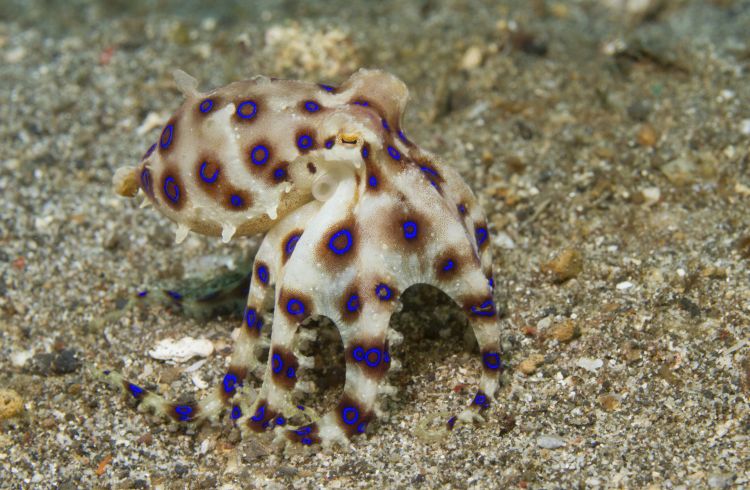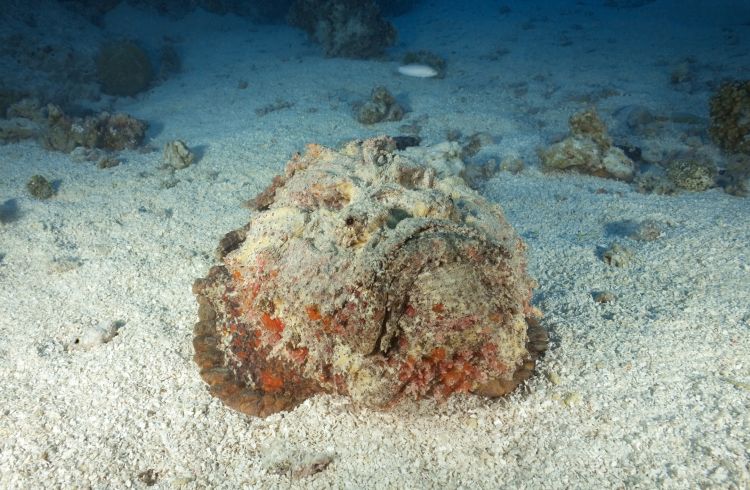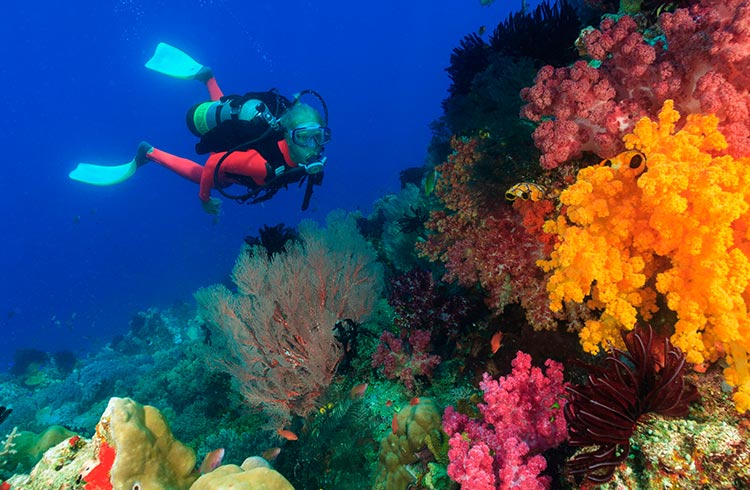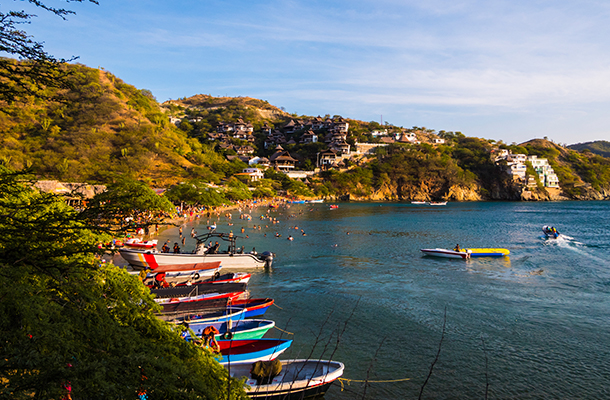Dangerous Marine Creatures - How to Stay Safe
Spending time in the ocean is a great way to relax and connect with nature, however some parts of nature aren't so friendly.
 Photo © GettyImages/Hal Beral
Photo © GettyImages/Hal Beral
The ocean, by and large, is a relatively safe place to spend time in or near relaxing and disconnecting from the hustle of everyday life. Over 70% of the Earth's surface is covered by water and there is an underwater world out there waiting to be explored. Most creatures will pretty much leave you alone unless you provoke them whether directly or indirectly; however some can make you ill or even potentially kill you if you don't take care.
- Blue Ringed Octopus
- Stingrays
- Fire Coral
- Coral Wound
- Stonefish
- Lionfish
- Sea Urchins
- Cone Shell
- Blue Bottles
- Irukandji
- Box Jellyfish
Blue Ringed Octopus
Region: Pacific Ocean, Indian Ocean
These eight legged creatures aren't as big as their common octopus relatives, barely growing bigger than 8 inches (20cm); but their toxic bite makes up for their size. They like to hide out in tidal pools, in rocky nooks and crannies and in coral reef areas. Blue ringed octopus are pretty timid and won't flare up those well known blue rings unless they feel threatened. Often people are bitten because they have picked one up and don't feel the bite because it is that tiny.
How to Avoid: Don't pick one up or harass it.
Medical Treatment: There is no anti-venom available. Flush the wound with clean water and protect puncture area.
Stingrays
Region: There are over 200 species of stingray, which inhabit every ocean in the world and some species can be found in freshwater environments such as rivers and lakes.
How to Avoid: These flat sharks will rarely barb someone, only doing so if it feels threatened or has been stepped on. To avoid being barbed, don't harass them and if you are walking through water, shuffle your feet rather than step through the water as sometimes stingrays will nestle and bury themselves. The stingray will sense the vibrations and move away.Medical Treatment: Depending on the size of the animal, a stingray can inflict lacerations or a puncture wound (even to the point where the barb can be embedded). Clean the wound thoroughly, apply pressure to control any bleeding and seek medical treatment urgently as there is risk for an infection and tetanus. Surgery may be required for serious cases.
Fire Coral
Region: Found in sub-tropical and tropical waters. While not "true corals", fire coral are colonial animals known as hydrozoans. These creatures have a hard, porous skeleton from which tiny stinging tentacles will protrude, stinging anything which may brush or push on it.
How to Avoid: If scuba diving or snorkeling, maintain your buoyancy and avoid brushing up against or touching any corals.Medical Treatment: Fire coral isn't toxic however it causes incredible pain and a skin rash, if brushed against. Rinse the affected area in vinegar and keep it clean and dry. If open wounds are present, seek medical treatment.
Coral Wound
Region:
How to Avoid:Medical Treatment: Remove any traces of coral from the wound and flush the wound with clean water. Sterilse the wound with a disinfectant such as Betadine. This will need to be repeated daily, however if it shows signs of inflammation or infection, seek medical help.
Stonefish
Region: These guys are the masters of camoflage, often looking like coral, algae or sponge covered rocks.
How to Avoid:Medical Treatment: Anti venom is available.

Lionfish
Region:
How to Avoid:Medical Treatment:
Sea Urchins
Region:
How to Avoid:Medical Treatment: It's advised to seek medical treatment immediately as they are living creatures which carry microorganisms which can cause infection or in the case of urchins, some carry toxins.
Cone Shell
Region: Found in sub-tropical, tropical and temperate waters in the Pacific, Indian and Atlantic oceans, usually in inter-tidal, sandy bottomed and coral reef areas. The sea snail which lives within the shell has a barbed, dart style radula which it extends out to defend itself, administering a painful and venomous sting.
How to Avoid: There are approximately 800 species of cone shell and all are poisonous to humans. Their shells are quite beautiful and varied in pattern so if you are snorkeling, scuba diving or even just walking on the beach, avoid picking up any shells.Medical Treatment: Clean the wound thoroughly with fresh water and administer first aid for puncture wound. Immobilize the affected location and seek medical attention immediately.
Blue Bottles
Region:
How to Avoid:Medical Treatment:
Irukandji
Region:
How to Avoid:Medical Treatment:
Box Jellyfish
Region:
How to Avoid:Medical Treatment:
Related articles
Simple and flexible travel insurance
You can buy at home or while traveling, and claim online from anywhere in the world. With 150+ adventure activities covered and 24/7 emergency assistance.
Get a quote


No Comments